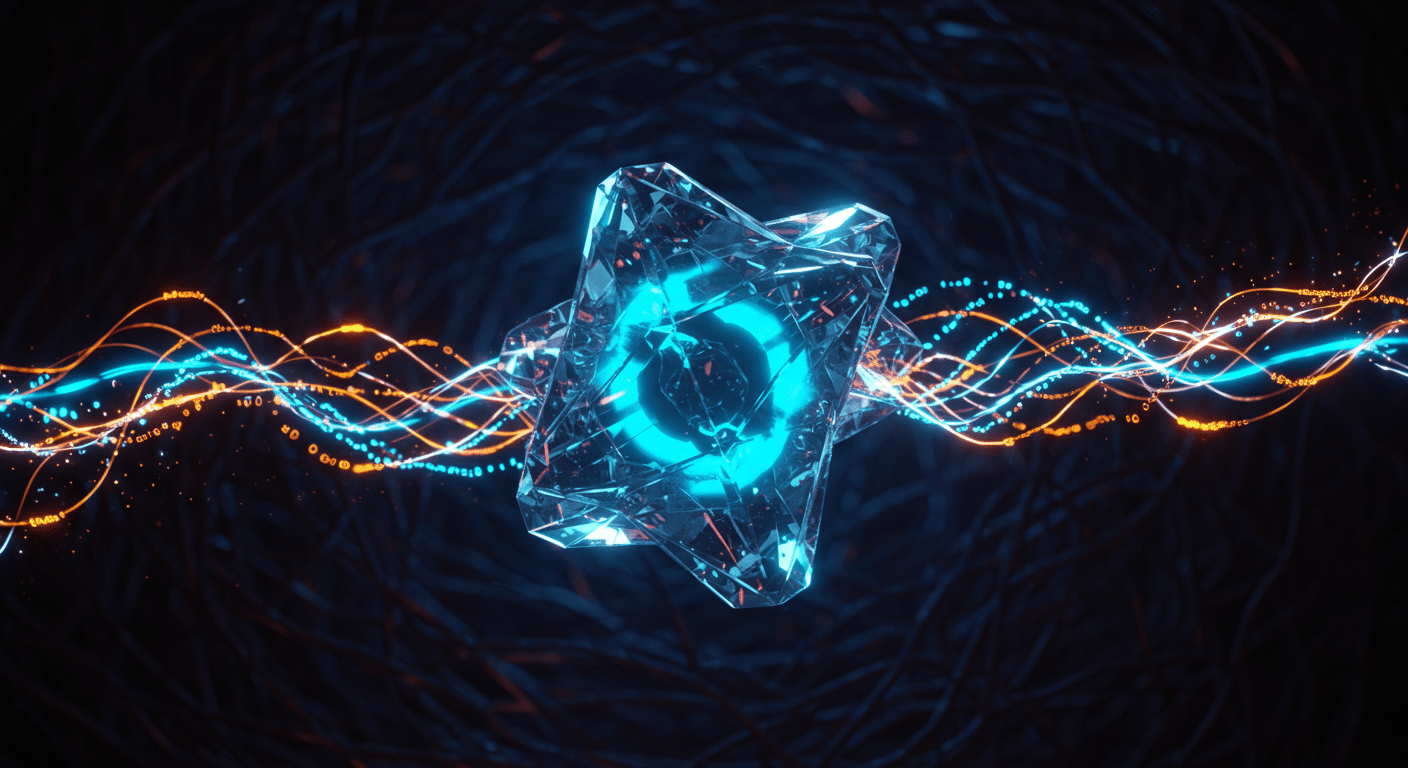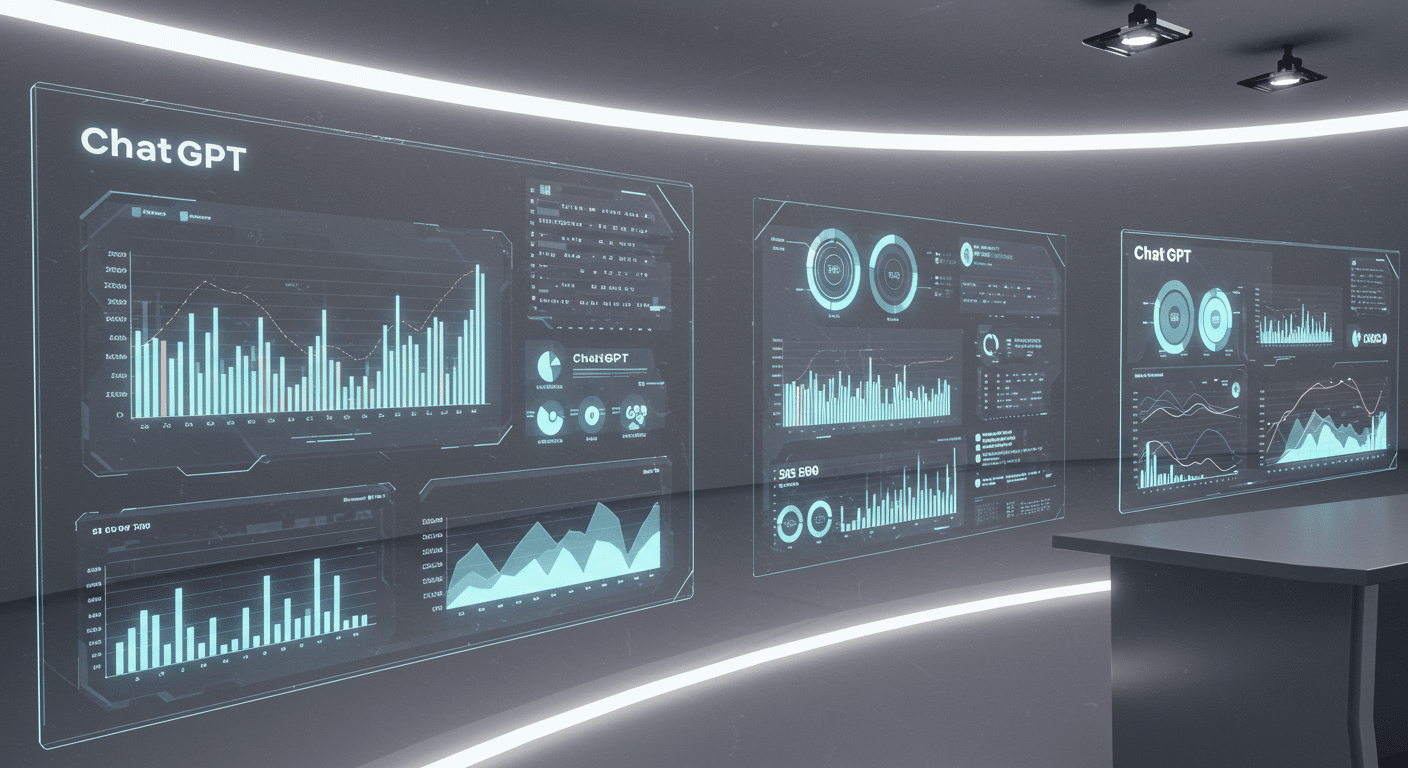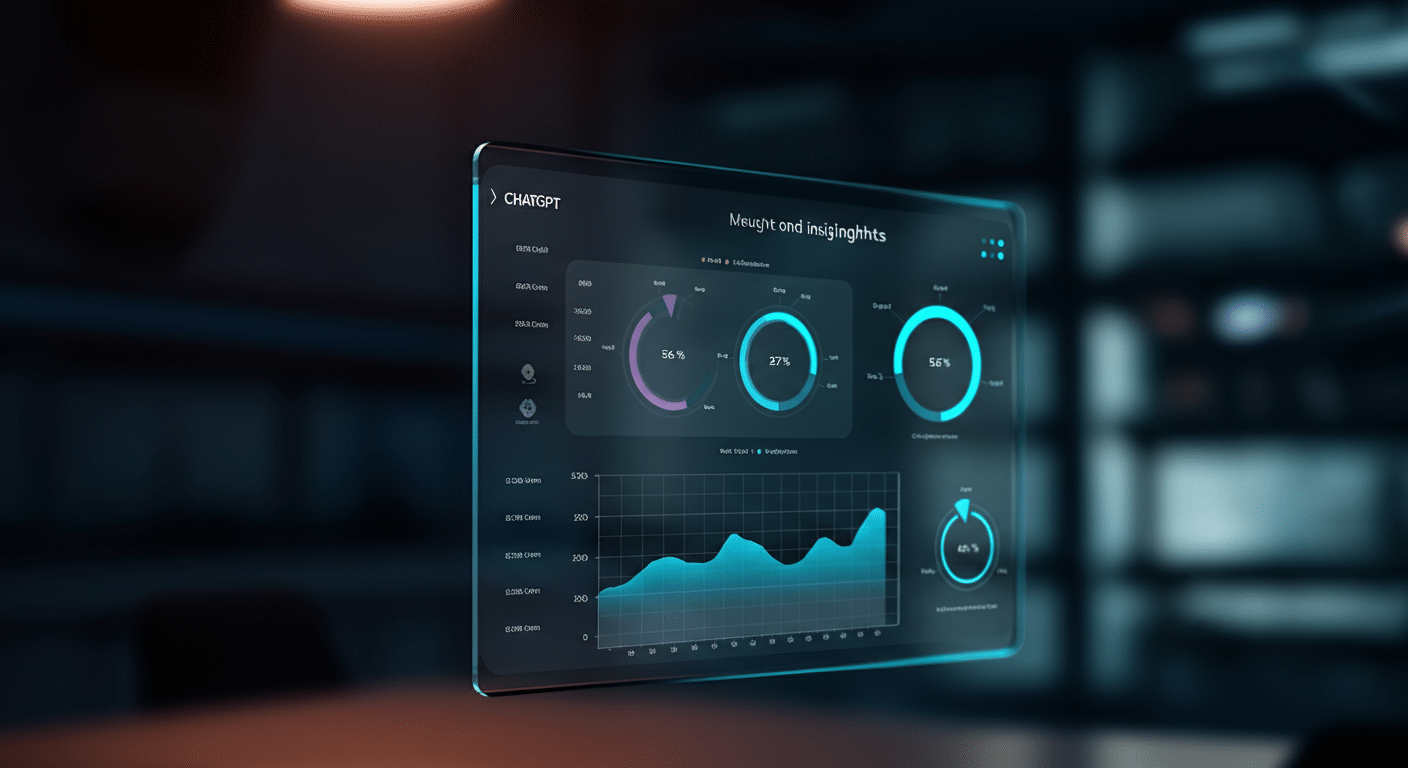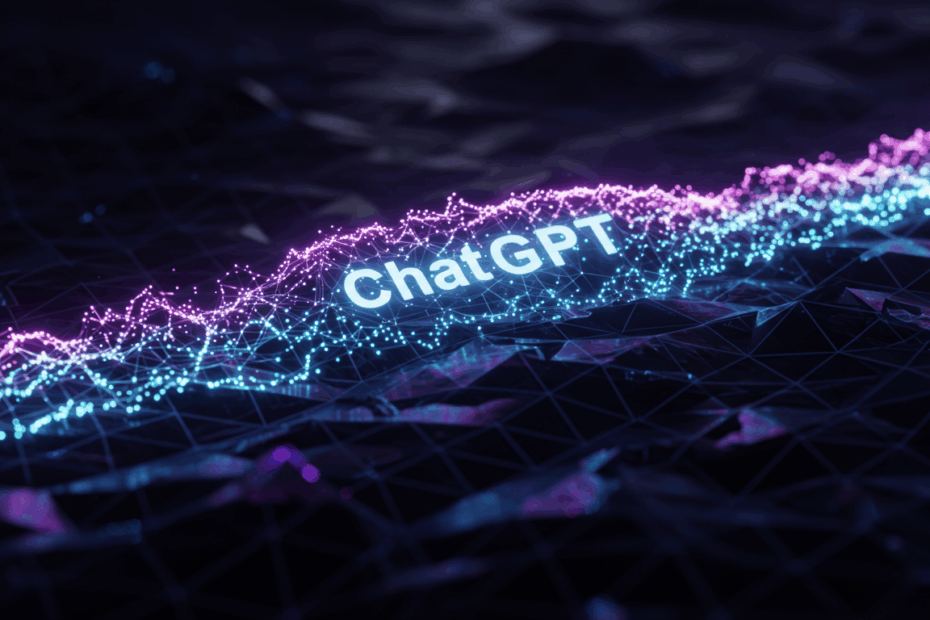New to AI? 🤔 Get up to speed with ChatGPT! Learn how it works, its uses, and the future of this game-changing tech.#ChatGPT #AI #BeginnersGuide
🎧 Listen to the Audio
If you’re short on time, check out the key points in this audio version.
📝 Read the Full Text
If you prefer to read at your own pace, here’s the full explanation below.
1. Basic Info
John: Let’s start with the basics of ChatGPT. In simple terms, ChatGPT is an AI-powered chatbot developed by OpenAI. As of now, it’s designed to understand and generate human-like text based on user inputs, solving the problem of needing quick, intelligent responses for tasks like answering questions or creating content. What makes it unique is its conversational style, which feels more natural than traditional search engines—think of it like chatting with a knowledgeable friend who can recall context from previous messages.
Lila: That analogy really helps! So, for beginners, is it like a super-smart assistant that learns from interactions? Currently, from what I’ve seen in trending posts on X from official OpenAI accounts, it’s being praised for its ability to personalize responses based on past chats, making it stand out in everyday use.
John: Exactly, Lila. In the past, AI tools were more rigid, but ChatGPT’s uniqueness comes from its training on vast datasets to mimic human dialogue. Looking ahead, experts on X are excited about how it could evolve to handle even more complex, personalized tasks, like providing tailored advice.
Lila: Cool, but what problem does it really solve for beginners? Right now, it tackles information overload by giving concise, relevant answers without sifting through web pages, and its uniqueness lies in admitting mistakes or rejecting inappropriate requests, as highlighted in early OpenAI announcements shared on X.
John: Well said. To wrap this up, imagine ChatGPT as a bridge between human curiosity and machine efficiency—it’s not just answering queries; it’s engaging in a dialogue that adapts to you.
Lila: I get it now! It’s like having an AI buddy that’s always ready to chat and help out.

2. Technical Mechanism
John: Moving to how ChatGPT works under the hood, let’s explain it simply. At its core, it’s built on neural networks, which are like artificial brain structures that process data in layers. In the past, these networks were trained on huge amounts of text to predict what comes next in a sentence.
Lila: Neural networks sound complex—can you break it down? Like, is it similar to how our brains connect ideas? Currently, from OpenAI’s posts on X, they’re emphasizing things like chain-of-thought reasoning, which helps the AI think step-by-step.
John: Good question. Yes, think of neural networks as a web of connections where data flows through, learning patterns. ChatGPT uses something called RLHF—Reinforcement Learning from Human Feedback—where humans rate responses to improve accuracy. As of now, this makes it better at generating helpful, safe replies.
Lila: Oh, RLHF is like training a pet with treats for good behavior? Looking ahead, will this evolve? I saw trending insights on X about agentic systems, where ChatGPT can even perform actions like browsing.
John: Precisely that analogy! In the past, basic models lacked this feedback loop, but now RLHF ensures more reliable outputs. For the future, OpenAI’s recent X posts mention integrating tools like web synthesis, allowing ChatGPT to act more autonomously.
Lila: That makes sense for beginners. So, the mechanism combines prediction with human-guided improvements to create conversational magic.
John: Absolutely, and it’s all powered by large language models that handle vast data efficiently.

3. Development Timeline
John: Let’s trace ChatGPT’s journey. In the past, it launched in late 2022 as a research preview by OpenAI, quickly gaining traction for its conversational abilities, as noted in their initial X posts about seeing, hearing, and speaking features rolled out in 2023.
Lila: Wow, so from a simple chatbot to multimodal? Currently, based on OpenAI’s updates on X, it’s at a stage with advanced memory and agent capabilities, like the ChatGPT agent introduced in mid-2025.
John: Yes, key past events include the release of GPT-4 in 2023, which powered early versions, and then GPT-4.5 in early 2025 as a research preview, shared via OpenAI’s X announcements. As of now, it’s hitting milestones like 700 million weekly users, per recent trends.
Lila: Impressive growth! Looking ahead, what’s next? OpenAI’s posts hint at open-weight models like gpt-oss for better reasoning and safety.
John: In the past, updates focused on voice and image integration; currently, projects include deep research and voice mode support. For the future, expect more agentic workflows, as per their 2025 X threads on function calling and web search.
Lila: So, it’s evolving from text-only to a full-fledged AI companion over time.
4. Team & Community
John: Behind ChatGPT is OpenAI, founded in 2015 by experts like Sam Altman and Elon Musk initially. The team includes AI researchers with backgrounds in machine learning from top institutions. Currently, community discussions on X from verified devs highlight collaborative feedback shaping features like memory.
Lila: The team’s expertise must drive innovation. What about community reactions? Right now, OpenAI’s X posts show enthusiasm for updates, with users sharing how memory personalizes chats.
John: In the past, the community grew rapidly post-launch, with engineers on X discussing RLHF improvements. As of now, active discussions involve safety training, as per OpenAI’s recent shares on open-weight models.
Lila: Fresh take: It’s inspiring how verified users on X, like OpenAI devs, engage directly, fostering a vibrant community. Looking ahead, this could lead to more user-driven developments.
John: Absolutely, the team’s diverse backgrounds in ethics and tech ensure balanced progress, with X reactions praising features like break reminders for well-being.
Lila: Yeah, it’s not just tech—it’s about building a helpful ecosystem.
John: Community input, from X trends, keeps it evolving responsibly.
5. Use-Cases & Future Outlook
John: ChatGPT shines in real-world use today, like helping with creative writing or coding, as seen in current X trends where users share generating obituaries or code. It’s solving everyday problems efficiently.
Lila: Real examples? Currently, OpenAI posts mention it for deep research or voice advice. Looking ahead, experts anticipate it in education for personalized learning.
John: In the past, it was used for simple Q&A; now, with agents, it can perform tasks like web browsing. Future applications could include advanced life advice, per recent X insights.
Lila: Exciting! For beginners, think using it for homework or brainstorming. Outlook-wise, trends suggest integration into daily tools for seamless assistance.
John: Yes, current use-cases extend to business, like data analysis, and future ones might involve agentic systems for autonomous work, as OpenAI teases on X.
Lila: So, from now to tomorrow, it’s transforming how we interact with AI.

6. Competitor Comparison
- Compare with at least 2 similar tools
- Explain in dialogue why ChatGPT is different
John: Comparing ChatGPT to competitors like Google’s Gemini or Anthropic’s Claude, both are AI chatbots, but currently, ChatGPT stands out with its memory feature, as per OpenAI’s X updates, allowing context from past chats—something others are catching up on.
Lila: Why is that different? For beginners, does it mean more personalized help? In comparisons on X, users note ChatGPT’s agent capabilities for actions like browsing, unlike Gemini’s focus on search integration.
John: Exactly. In the past, all were text-based, but now ChatGPT’s RLHF makes responses more human-like. Looking ahead, its open-weight models could make it more accessible than Claude’s closed systems.
Lila: Fresh perspective: ChatGPT differs by emphasizing safety and ethics, as highlighted in OpenAI posts, setting it apart from competitors’ occasional biases.
John: Well put. Ultimately, its conversational depth and tool integration give it an edge.
7. Risks & Cautions
John: While powerful, ChatGPT has risks like biases from training data, potentially giving skewed answers. Currently, OpenAI addresses this via safety training, as in their X posts on prompt refusals.
Lila: What about security? Right now, trends mention dark sides like bizarre outputs, so users should verify info.
John: In the past, there were issues with inappropriate responses; now, features like instruction hierarchy help. Ethical questions include job displacement, discussed in X insights.
Lila: Looking ahead, could it amplify misinformation? Cautions: Always cross-check and use responsibly.
John: Yes, limitations include factual errors, so DYOR is key.
Lila: Totally, balance excitement with awareness.
8. Expert Opinions
John: From credible X posts, OpenAI shared that ChatGPT’s memory feature personalizes responses by referencing past chats, making it more helpful for various tasks—paraphrasing their April 2025 update.
Lila: Another one: OpenAI highlighted the release of open-weight models like gpt-oss for advancements in reasoning and safety, developed with community feedback, as per their August 2025 post.
John: Experts via OpenAI also noted the agentic system combining browser actions and research, unifying strengths for practical use, from a July 2025 thread.
Lila: These opinions show a focus on usability and ethics in AI.
9. Latest News & Roadmap
John: Latest news: ChatGPT is set to hit 700 million weekly users, as confirmed in recent X posts from OpenAI execs, with fourfold growth over the past year.
Lila: What’s being developed? Currently, open-weight models for agentic workflows, including function calling and web search, per August 2025 updates.
John: Roadmap-wise, looking ahead, expect improved support for tough moments and life advice, guided by experts, as shared recently on X.
Lila: Exciting! Also, the GPT-4.5 preview from February 2025 is rolling out, with more capabilities in projects.
John: Yes, current testing includes voice mode and memory in projects.
10. FAQ
Question 1: What is ChatGPT?
John: ChatGPT is an AI chatbot by OpenAI for conversational interactions.
Lila: It’s like a digital assistant that generates text responses.
Question 2: How do I access ChatGPT?
John: Visit chat.openai.com or use the app; free tier available, with paid options for more features.
Lila: Currently, Plus users get advanced models like GPT-4.5.
Question 3: Is ChatGPT safe to use?
John: Yes, with built-in safety, but verify outputs and avoid sharing sensitive info.
Lila: OpenAI’s updates on X emphasize refusing unsafe prompts.
Question 4: Can ChatGPT write code?
John: Absolutely, it supports coding in languages like Python, with chain-of-thought for better results.
Lila: Users on X share examples of its code-writing prowess.
Question 5: What’s new in ChatGPT?
John: Recent additions include memory and agent features for task automation.
Lila: Looking ahead, more open models for reasoning.
Question 6: How does ChatGPT learn?
John: Through neural networks and RLHF, trained on vast data.
Lila: It improves from human feedback over time.
Question 7: Can it handle images or voice?
John: Yes, since past updates; now includes voice conversations.
Lila: Great for accessibility in current versions.
11. Related Links
- Official website (if any): https://openai.com/chatgpt
- GitHub or papers: https://github.com/openai (for related repos) and OpenAI research papers at https://openai.com/research
- Recommended tools: Explore similar AIs like Google Gemini or use ChatGPT plugins for enhanced functionality
Final Thoughts
John: Looking at what we’ve explored today, ChatGPT clearly stands out in the current AI landscape. Its ongoing development and real-world use cases show it’s already making a difference.
Lila: Totally agree! I loved how much I learned just by diving into what people are saying about it now. I can’t wait to see where it goes next!
Disclaimer: This article is for informational purposes only. Please do your own research (DYOR) before making any decisions.
